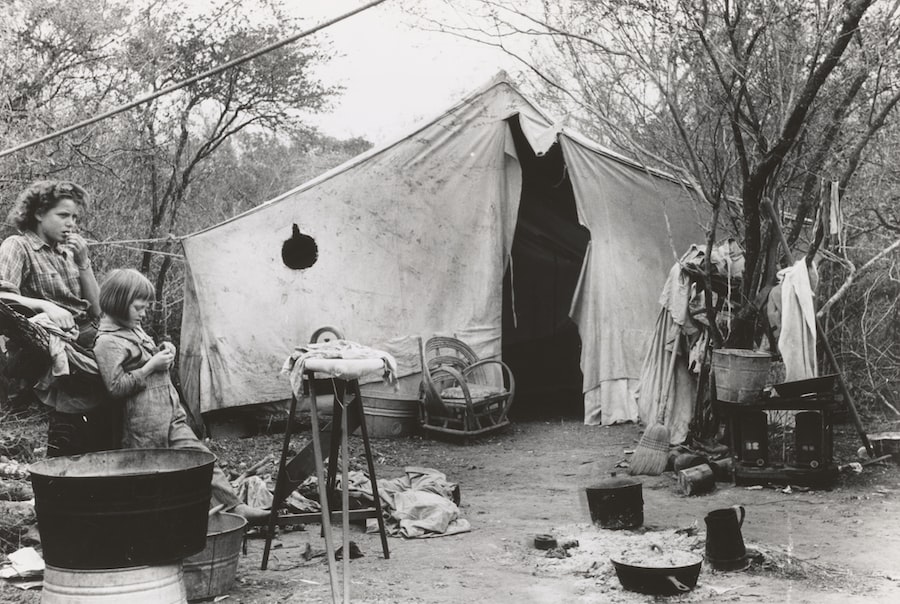Bye Bye Tent Caterpillars: Effective Ways to Eliminate Them from Your Garden

Tent caterpillars are a common pest that can wreak havoc on gardens. These caterpillars are known for their distinctive silk tents, which they use as a shelter and feeding ground. While they may seem harmless at first, tent caterpillars can cause significant damage to plants and trees if left unchecked.
The impact of tent caterpillars on gardens is twofold. Firstly, they can defoliate plants and trees, stripping them of their leaves and weakening them. This can lead to stunted growth, reduced fruit production, and even death in severe cases. Secondly, the presence of tent caterpillars can attract other pests and predators, further disrupting the delicate balance of a garden ecosystem.
Controlling tent caterpillars is essential for maintaining a healthy garden. By taking proactive measures to prevent infestations and implementing effective control methods, gardeners can protect their plants and ensure the long-term health of their garden.
Key Takeaways
- Tent caterpillars can cause significant damage to gardens and trees.
- Identifying tent caterpillars and understanding their life cycle is important for effective control.
- Natural methods for controlling tent caterpillars include pruning, removing egg masses, and introducing natural predators.
- Chemical treatments can be effective but should be used with caution and according to label instructions.
- Preventing tent caterpillar infestations involves maintaining a healthy garden and removing nests safely and promptly.
Identifying Tent Caterpillars and their Life Cycle
Tent caterpillars are easily recognizable by their appearance and behavior. They have long, hairy bodies with distinct markings, such as stripes or spots. Their coloration can vary depending on the species, but they are typically brown or black with lighter-colored markings.
The life cycle of tent caterpillars begins in the spring when the eggs hatch. The young caterpillars emerge and immediately begin constructing their silk tents. These tents serve as a protective shelter where the caterpillars rest and feed. As they grow, the caterpillars venture out from the tent to feed on nearby plants and trees.
After several weeks of feeding, the caterpillars enter the pupal stage, where they undergo metamorphosis and transform into adult moths. The adult moths mate and lay eggs, starting the cycle anew. Understanding the life cycle of tent caterpillars is crucial for implementing effective control measures, as targeting them at the right stage can greatly reduce their population.
Understanding the Damage Caused by Tent Caterpillars
Tent caterpillars can cause significant damage to plants and trees. They feed voraciously on leaves, defoliating entire branches and weakening the overall health of the plant. This can lead to reduced photosynthesis, stunted growth, and decreased fruit production.
In addition to defoliation, tent caterpillar infestations can have a broader impact on the overall health of a garden. The presence of these pests can attract other insects and predators, disrupting the natural balance of the ecosystem. This can lead to further damage and infestations, as other pests take advantage of the weakened plants.
Furthermore, the silk tents created by tent caterpillars can be unsightly and detract from the aesthetic appeal of a garden. These tents can cover large areas of plants and trees, making them an eyesore for gardeners and visitors alike.
Natural Methods for Controlling Tent Caterpillars
| Method | Effectiveness | Cost |
|---|---|---|
| Birds | High | Free |
| Bacillus thuringiensis | High | 10-20 per acre |
| Neem oil | Medium | 20-30 per acre |
| Diatomaceous earth | Low | 30-40 per acre |
There are several natural methods that gardeners can employ to control tent caterpillars. One effective method is physical removal, which involves manually removing the caterpillars and their tents from plants and trees. This can be done by hand or with the help of a stick or broom to knock down the tents.
Another natural method is the use of natural predators. Birds, such as robins and chickadees, feed on tent caterpillars and can help keep their population in check. Additionally, certain parasitic wasps lay their eggs inside tent caterpillar eggs, effectively killing them off before they hatch.
These natural methods are generally safe for the environment and do not pose any risks to other beneficial insects or animals. However, they may require more time and effort compared to chemical treatments.
Chemical Treatments for Eliminating Tent Caterpillars
Chemical treatments can be an effective way to eliminate tent caterpillars, especially in cases of severe infestations. Insecticides and pesticides specifically formulated for caterpillar control can be applied to plants and trees to kill off the pests.
Insecticides work by targeting the nervous system of the caterpillars, causing paralysis and death. Pesticides, on the other hand, are designed to disrupt the caterpillars’ feeding and growth processes, ultimately leading to their demise.
While chemical treatments can be highly effective, they should be used with caution. It is important to follow the instructions provided by the manufacturer and take necessary precautions to protect yourself, other animals, and the environment. Additionally, it is advisable to use chemical treatments as a last resort and only when natural methods have proven ineffective.
How to Prevent Tent Caterpillars from Infesting Your Garden

Prevention is key when it comes to controlling tent caterpillars and maintaining a healthy garden. There are several steps that gardeners can take to prevent infestations.
Proper garden maintenance is essential. Regularly inspecting plants and trees for signs of tent caterpillar activity can help catch infestations early on. Pruning and removing any egg masses or tents found can prevent the caterpillars from hatching and causing damage.
Creating physical barriers around vulnerable plants can also be an effective prevention method. This can be done using netting or row covers to keep the caterpillars out. Additionally, maintaining a clean and tidy garden can discourage tent caterpillars from taking up residence, as they prefer areas with abundant food sources and shelter.
Removing Tent Caterpillar Nests Safely and Effectively
Removing tent caterpillar nests safely and effectively requires careful planning and execution. Here is a step-by-step guide for removing these nests:
1. Wear protective clothing: Before attempting to remove tent caterpillar nests, it is important to wear protective clothing, including gloves and long sleeves, to avoid direct contact with the caterpillars and their irritating hairs.
2. Choose the right time: The best time to remove tent caterpillar nests is in the early morning or late evening when the caterpillars are less active. This will make it easier to remove the nests without disturbing the caterpillars.
3. Use a stick or broom: Gently use a stick or broom to knock down the nests from plants or trees. Be careful not to damage the branches or surrounding foliage.
4. Collect and dispose of the nests: Once the nests have been knocked down, collect them in a bag or container and dispose of them properly. It is important to seal the bag tightly to prevent any caterpillars from escaping.
5. Clean up the area: After removing the nests, thoroughly clean up the area to remove any remaining silk or caterpillar hairs. This will help prevent future infestations and minimize any potential irritation.
It is important to note that removing tent caterpillar nests can be a messy and potentially hazardous task. If you are unsure or uncomfortable with removing the nests yourself, it is advisable to seek professional assistance.
Using Beneficial Insects to Control Tent Caterpillars
Beneficial insects can be a valuable ally in controlling tent caterpillars. Parasitic wasps, for example, lay their eggs inside tent caterpillar eggs, effectively killing them off before they hatch. Birds, such as robins and chickadees, also feed on tent caterpillars and can help keep their population in check.
Introducing these beneficial insects into your garden can be done by providing suitable habitats and food sources. Planting native flowering plants can attract parasitic wasps, while providing bird feeders and birdhouses can encourage birds to visit your garden.
While beneficial insects can be effective in controlling tent caterpillars, it is important to note that they may not completely eliminate the pest population. Therefore, it is advisable to use them in conjunction with other control methods for optimal results.
Maintaining a Healthy Garden to Prevent Tent Caterpillar Infestations
Maintaining a healthy garden is crucial in preventing tent caterpillar infestations. Here are some tips to keep your garden in top shape:
1. Proper watering: Water your plants and trees regularly, providing them with the right amount of moisture. Avoid overwatering, as this can create damp conditions that are favorable for pests.
2. Fertilization: Use organic fertilizers to provide essential nutrients to your plants. Healthy, well-nourished plants are more resistant to pest infestations.
3. Pruning: Regularly prune your plants and trees to remove dead or diseased branches. This will improve air circulation and reduce the risk of infestations.
4. Weed control: Keep your garden free from weeds, as they can provide hiding places and food sources for pests. Regularly remove weeds and use mulch to suppress their growth.
5. Crop rotation: Rotate your crops each year to prevent the buildup of pests and diseases in the soil. This will help maintain a healthy garden ecosystem and reduce the risk of infestations.
By following these tips and maintaining a healthy garden, you can greatly reduce the risk of tent caterpillar infestations and ensure the long-term health of your plants.
Keeping Your Garden Free from Tent Caterpillars
In conclusion, controlling tent caterpillars is essential for maintaining a healthy garden. These pests can cause significant damage to plants and trees if left unchecked, leading to reduced growth and fruit production. By implementing natural methods, such as physical removal and the use of natural predators, gardeners can effectively control tent caterpillar populations without harming the environment.
Chemical treatments can also be used as a last resort, but they should be used with caution and only when necessary. Prevention is key in keeping your garden free from tent caterpillars. Regularly inspecting plants and trees, creating physical barriers, and maintaining a clean and tidy garden can help prevent infestations.
By following these guidelines and maintaining a healthy garden, you can protect your plants from tent caterpillar damage and ensure the long-term health and beauty of your garden.
If you’re dealing with a tent caterpillar infestation in your yard, you’ll want to check out this helpful article on Lawn World’s website. They provide valuable tips and techniques on how to get rid of tent caterpillars effectively. From natural remedies to chemical treatments, this article covers various methods to combat these pesky pests. Don’t let tent caterpillars ruin your outdoor space – click here to learn more about effective solutions.



